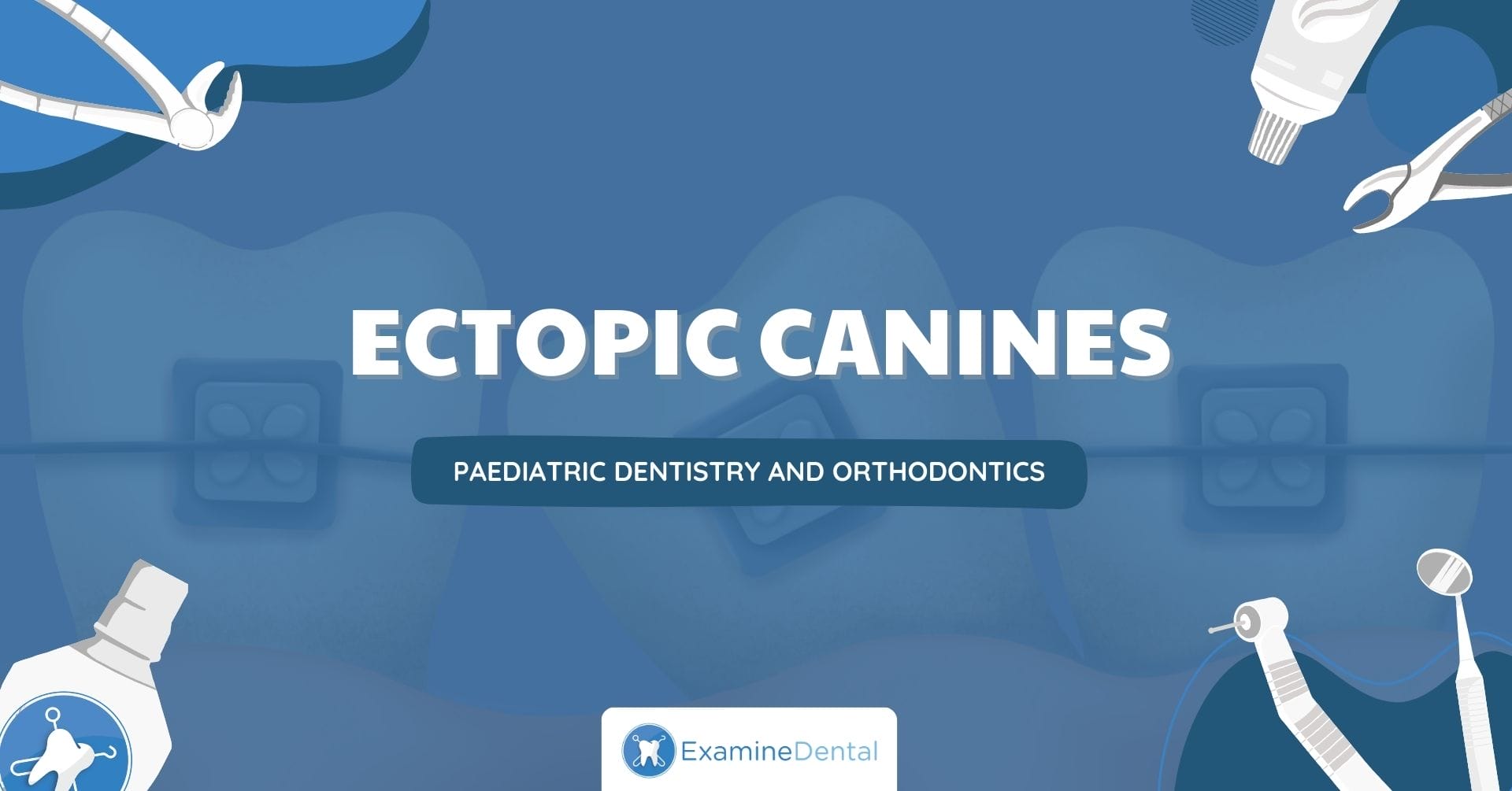
Ectopic Canines
Contents
ToggleEctopic Canines
- Last updated September 8, 2025
Objectives
By the end of these revision notes, you should:
Background
Ectopic canines most commonly involve the maxilla and early identification is important to allow for effective management. The prevalence is around 1-3% (second to impacted third molars).
Most commonly, ectopic canines are located palatally (with a 3:1 ratio of palatal to buccal). In around 10% of cases, they may be bilaterally impacted.
The aetiology is likely to be multifactorial. However, commonly implicated factors include familial history, missing/malformed/diminutive lateral incisors (as the canines lose their reference point – referred to as the guidance theory) and delayed development in the dentition.
Complications of ectopic canines include root resorption of adjacent teeth and cyst formation.
Examination of Ectopic Canines
Clinical
Clinical examination and vigilance is key to identifying ectopic canines. From the age of 9, you should be palpating for the presence of the canines in the buccal sulcus. Features that should be assess clinically include:
- An absence of a buccal canine bulge – this may indicate impaction
- Presence of a palatal swelling – may indicate palatal positioning
- Mobility of deciduous canine – a lack of mobility may indicate impaction
- Arch space – a lack of arch space will promote impaction
- Splaying or angulation of the lateral incisor – may indicate abnormal positioning
- Anatomy of lateral incisor – if the lateral incisors are missing, diminutive or malformed then this increases the of the canine becoming impacted (guidance theory)

🚨 Access Restricted

Subscribe to access ALL revision notes and cheat sheets!
We provide a wide range of revision notes and cheat sheets to help you study and prepare for exams! To access all we have to offer, head over and subscribe to ExamineDental now to supercharge your revision!

